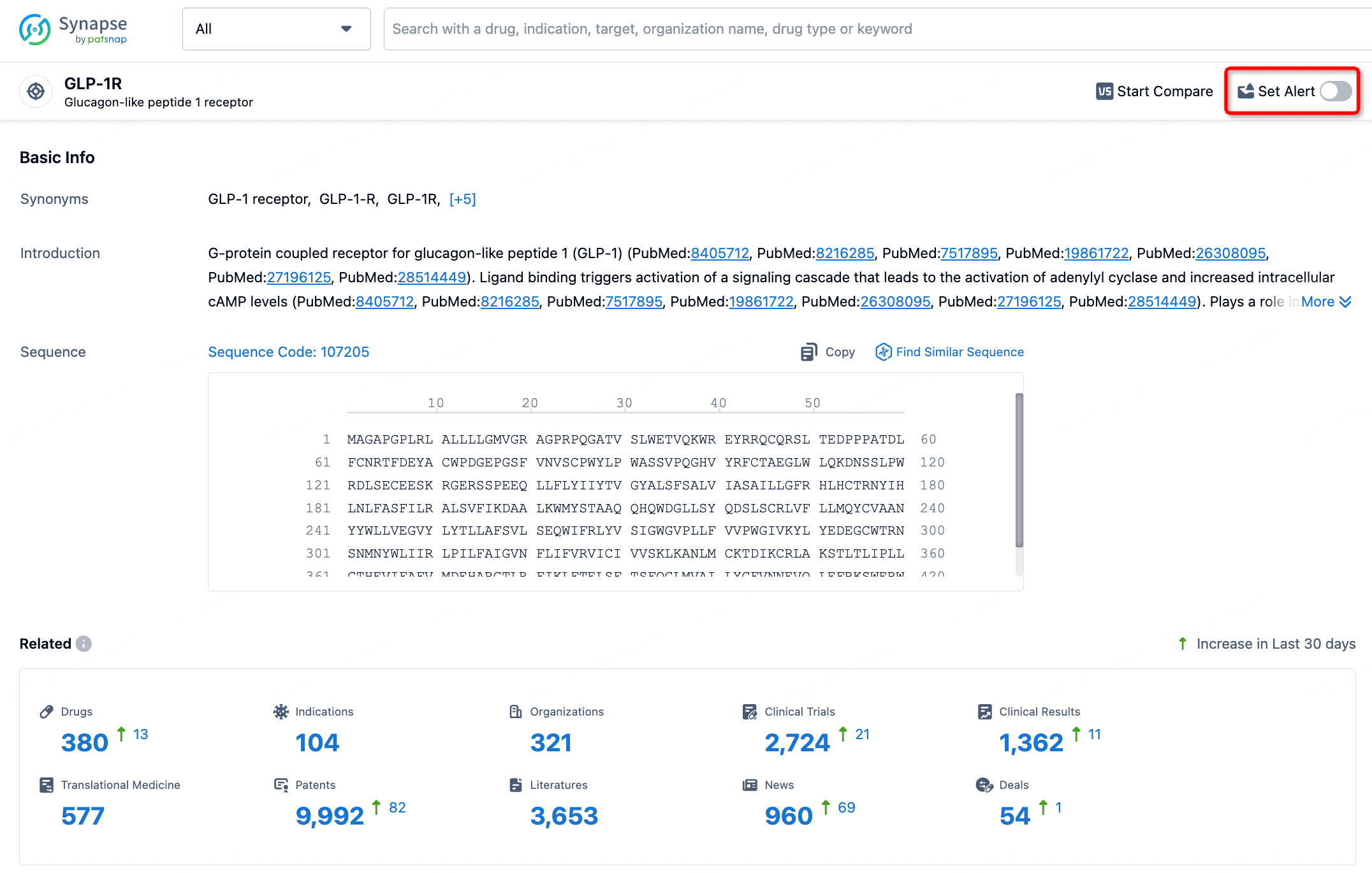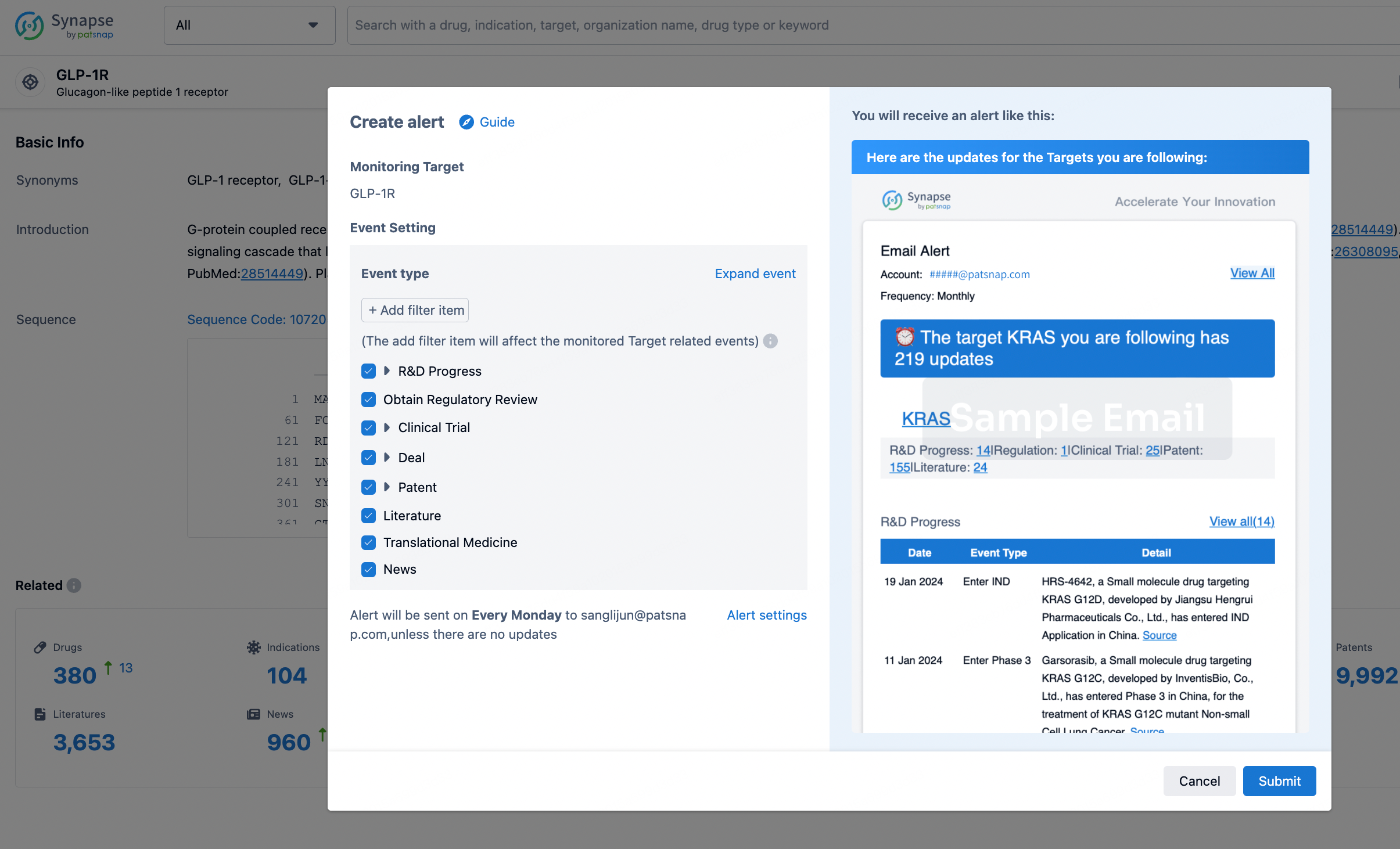Request Demo
What are IL-13Rα2 modulators and how do they work?
21 June 2024
Interleukin-13 receptor alpha 2 (IL-13Rα2) modulators are an exciting frontier in immunotherapy and targeted cancer treatments. These agents are designed to influence the activity of IL-13Rα2, a receptor that plays a critical role in immune response modulation and has been implicated in various pathological conditions, including cancer, fibrosis, and inflammatory diseases. This blog post delves into what IL-13Rα2 modulators are, how they function, and their potential therapeutic applications.
IL-13Rα2 is a high-affinity receptor for the cytokine IL-13, which is involved in immune regulation and response. Unlike its counterparts, IL-13Rα1, which forms a signaling complex with IL-4Rα to mediate the effects of IL-13 and IL-4, IL-13Rα2 acts predominantly as a decoy receptor. It binds IL-13 with high affinity but does not initiate the classic signaling cascade, thus modulating the availability and activity of IL-13 in the extracellular environment. The overexpression of IL-13Rα2 has been observed in various types of cancer cells, including glioblastoma, pancreatic, and colorectal cancers, making it a promising target for therapeutic intervention.
IL-13Rα2 modulators work through several mechanisms to alter the activity of IL-13Rα2 and subsequently impact disease progression. One of the primary mechanisms involves the use of monoclonal antibodies that specifically target IL-13Rα2. These antibodies can block the interaction between IL-13 and IL-13Rα2, thereby preventing the decoy receptor from sequestering IL-13 and allowing IL-13 to engage its functional receptor, IL-13Rα1. This can enhance the immune response against tumors or modulate inflammatory pathways.
Another approach involves the design of small molecules that can modulate IL-13Rα2 expression or function. These molecules may inhibit the receptor's expression on the cell surface or alter its binding affinity, thus influencing the downstream effects of IL-13. Gene therapy techniques are also being explored to knock down IL-13Rα2 expression using RNA interference or CRISPR-Cas9 technology. These methods aim to reduce the decoy effect of IL-13Rα2, thereby enhancing the therapeutic potential of IL-13 in various diseases.
IL-13Rα2 modulators have shown promise in several therapeutic areas, particularly in oncology. In cancer, IL-13Rα2 is often overexpressed on the surface of tumor cells, making it an attractive target for antibody-based therapies. By blocking IL-13Rα2, these treatments can prevent the tumor cells from evading the immune system, thereby enhancing the body's natural antitumor response. Clinical trials are currently investigating the efficacy of IL-13Rα2-targeted therapies in glioblastoma, a highly aggressive brain tumor with limited treatment options. Early results have shown that these modulators can improve survival rates and reduce tumor progression.
In addition to cancer, IL-13Rα2 modulators are being explored for their potential in treating fibrotic diseases. IL-13 is a key player in the development of fibrosis, a pathological condition characterized by excessive tissue scarring and organ dysfunction. By modulating IL-13Rα2 activity, these agents can potentially reduce the fibrotic response and improve tissue function. Preclinical studies have demonstrated that targeting IL-13Rα2 can reduce fibrosis in models of liver, lung, and kidney diseases, paving the way for future clinical applications.
Moreover, IL-13Rα2 modulators hold promise in the treatment of inflammatory diseases such as asthma and inflammatory bowel disease (IBD). IL-13 is a crucial mediator of inflammation in these conditions, and by regulating its activity through IL-13Rα2, these modulators can potentially ameliorate symptoms and improve patient outcomes. Experimental models of asthma and IBD have shown that IL-13Rα2-targeted therapies can reduce inflammation and restore normal tissue function, highlighting their potential as novel therapeutic agents.
In conclusion, IL-13Rα2 modulators represent a novel and promising approach to treating a variety of diseases characterized by abnormal IL-13 activity. By targeting the decoy receptor IL-13Rα2, these agents can enhance the immune response, reduce fibrosis, and modulate inflammation, offering new hope for patients with cancer, fibrotic diseases, and inflammatory conditions. As research progresses, we can expect to see more innovative therapies emerging from this exciting area of biomedical science.
IL-13Rα2 is a high-affinity receptor for the cytokine IL-13, which is involved in immune regulation and response. Unlike its counterparts, IL-13Rα1, which forms a signaling complex with IL-4Rα to mediate the effects of IL-13 and IL-4, IL-13Rα2 acts predominantly as a decoy receptor. It binds IL-13 with high affinity but does not initiate the classic signaling cascade, thus modulating the availability and activity of IL-13 in the extracellular environment. The overexpression of IL-13Rα2 has been observed in various types of cancer cells, including glioblastoma, pancreatic, and colorectal cancers, making it a promising target for therapeutic intervention.
IL-13Rα2 modulators work through several mechanisms to alter the activity of IL-13Rα2 and subsequently impact disease progression. One of the primary mechanisms involves the use of monoclonal antibodies that specifically target IL-13Rα2. These antibodies can block the interaction between IL-13 and IL-13Rα2, thereby preventing the decoy receptor from sequestering IL-13 and allowing IL-13 to engage its functional receptor, IL-13Rα1. This can enhance the immune response against tumors or modulate inflammatory pathways.
Another approach involves the design of small molecules that can modulate IL-13Rα2 expression or function. These molecules may inhibit the receptor's expression on the cell surface or alter its binding affinity, thus influencing the downstream effects of IL-13. Gene therapy techniques are also being explored to knock down IL-13Rα2 expression using RNA interference or CRISPR-Cas9 technology. These methods aim to reduce the decoy effect of IL-13Rα2, thereby enhancing the therapeutic potential of IL-13 in various diseases.
IL-13Rα2 modulators have shown promise in several therapeutic areas, particularly in oncology. In cancer, IL-13Rα2 is often overexpressed on the surface of tumor cells, making it an attractive target for antibody-based therapies. By blocking IL-13Rα2, these treatments can prevent the tumor cells from evading the immune system, thereby enhancing the body's natural antitumor response. Clinical trials are currently investigating the efficacy of IL-13Rα2-targeted therapies in glioblastoma, a highly aggressive brain tumor with limited treatment options. Early results have shown that these modulators can improve survival rates and reduce tumor progression.
In addition to cancer, IL-13Rα2 modulators are being explored for their potential in treating fibrotic diseases. IL-13 is a key player in the development of fibrosis, a pathological condition characterized by excessive tissue scarring and organ dysfunction. By modulating IL-13Rα2 activity, these agents can potentially reduce the fibrotic response and improve tissue function. Preclinical studies have demonstrated that targeting IL-13Rα2 can reduce fibrosis in models of liver, lung, and kidney diseases, paving the way for future clinical applications.
Moreover, IL-13Rα2 modulators hold promise in the treatment of inflammatory diseases such as asthma and inflammatory bowel disease (IBD). IL-13 is a crucial mediator of inflammation in these conditions, and by regulating its activity through IL-13Rα2, these modulators can potentially ameliorate symptoms and improve patient outcomes. Experimental models of asthma and IBD have shown that IL-13Rα2-targeted therapies can reduce inflammation and restore normal tissue function, highlighting their potential as novel therapeutic agents.
In conclusion, IL-13Rα2 modulators represent a novel and promising approach to treating a variety of diseases characterized by abnormal IL-13 activity. By targeting the decoy receptor IL-13Rα2, these agents can enhance the immune response, reduce fibrosis, and modulate inflammation, offering new hope for patients with cancer, fibrotic diseases, and inflammatory conditions. As research progresses, we can expect to see more innovative therapies emerging from this exciting area of biomedical science.
How to obtain the latest development progress of all targets?
In the Synapse database, you can stay updated on the latest research and development advances of all targets. This service is accessible anytime and anywhere, with updates available daily or weekly. Use the "Set Alert" function to stay informed. Click on the image below to embark on a brand new journey of drug discovery!
AI Agents Built for Biopharma Breakthroughs
Accelerate discovery. Empower decisions. Transform outcomes.
Get started for free today!
Accelerate Strategic R&D decision making with Synapse, PatSnap’s AI-powered Connected Innovation Intelligence Platform Built for Life Sciences Professionals.
Start your data trial now!
Synapse data is also accessible to external entities via APIs or data packages. Empower better decisions with the latest in pharmaceutical intelligence.


